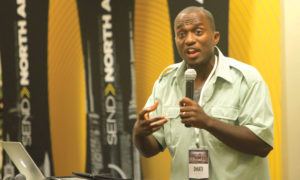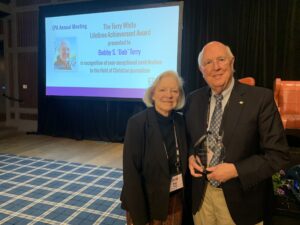

Chris and Mindy Flora responded to God’s stirring in their hearts and moved to Canada in January of 2017 to reach a city whose population desperately needed the Gospel.
“When we heard that the city of Calgary was 95 percent lost and one of the fastest growing cities in North America,” Chris said, “God broke our hearts for the city.”
After inviting people to Bible studies, hosting block parties and summer camps, and carefully cultivating relationships, the Floras launched Multiply Church in February 2018 with a core group of twenty-eight people.
“It’s now about 130 people who call us home,” Chris said, “and we average between sixty and seventy people every week. We saw eleven accept Christ and seven baptized in our first year.”
Throughout the US and Canada, similar stories can be told of how God is blessing new congregations that are making a significant Gospel impact on individual lives and communities.
In Atlanta, an under-reached area in the South, Mike McKee and his team launched Image Church in January 2018. They average 191 in worship attendance, have baptized twenty-one people, and have built strong relationships within the community, especially a local elementary school they serve.
Grace Church in Boston has a plan to multiply across the city. And in September 2018, they launched a third campus—Grace Church West Bridgewater, led by pastor Stephen Sargent. The new congregation has baptized twenty-seven since its launch, and on Easter Sunday 2019 they welcomed 667 people.
Last year, Southern Baptists planted 624 new churches in North America. An additional 254 churches began cooperating with the Southern Baptist Convention, bringing the total number of new churches added to 878. Of those new church plants, 62 percent were either non-Anglo or multiethnic.
The North American Mission Board comes alongside churches, associations, and state Baptist convention partners to plant new churches in North America.
“We plant churches everywhere for everyone,” said NAMB president Kevin Ezell. “We are incredibly grateful for each of these new churches and the missionaries who lead them, but we need so many more. We could plant a hundred more tomorrow if we had the qualified church planting missionaries to do it.”
NAMB has developed its strategy to help churches plant healthy congregations that can thrive in cities and neighborhoods where their Gospel witness is desperately needed.
“Over the years, we have continued to hone our church planting pathway so that our missionaries are able to start with a strong foundation,” said Dhati Lewis, vice president of the Send Network, NAMB’s church planting arm. “That enables these churches to be a lasting presence in communities for years to come.”
A key aspect to discovering and developing more of those missionaries has been the creation of the Send Network’s Multiplication Pipeline. The Send Network instituted multiplication as a core value within partner churches in order to encourage and equip church plants and establish churches to train new missionaries.
“We have been working to identify churches that we call ‘multiplying churches.’ These are congregations that intentionally disciple and lead their people by preparing them to become workers in the harvest,” Ezell said. “Any church, no matter the size, can multiply if they decide to do so. At NAMB, our goal is to help churches create this sending culture.”
To learn more and to involve your church in NAMB’s Multiplication Pipeline, visit namb.net/pipeline.















